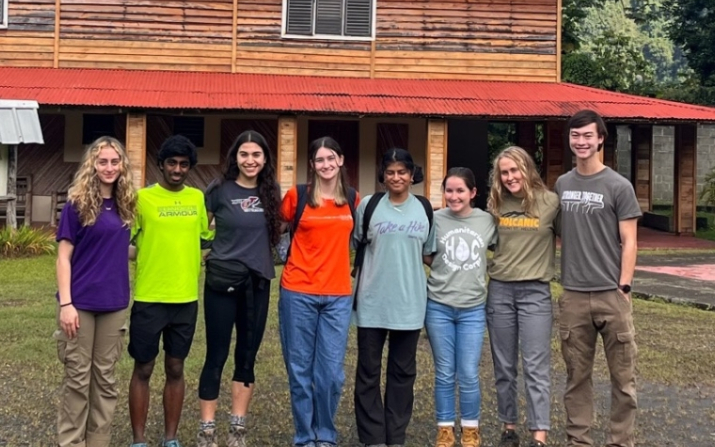Engineering students work to provide clean water to residents of the Dominican Republic

When you wake up each morning, it’s likely you don’t think twice about how you’re going to acquire safe drinking water for the day. Unfortunately, according to the Center for Disease Control and Prevention, that’s not the case for 2 billion people around the world who lack easy access to such a commodity—but Case Western Reserve students are working to be a part of the solution.
In recognition of today (March 22) being World Water Day, The Daily caught up with the CWRU chapter of Engineers Without Borders. Members of the group traveled to Cruce de Blanco, a community in the Dominican Republic, in January to build a water chlorinator and install a sediment filtration system that would bring clean drinking water to the homes of 450 residents—and alleviate the cost of buying bottled water.
“There’s rampant poverty in the community and [buying bottled water] is a huge cost for them to undertake,” said Victor Nash, the team’s translator and second-year civil and environmental engineering major. “For all of their drinking water to come from that source is not good for their way of life.”
Students from Case Western Reserve have traveled to Cruce de Blanco 12 times since 2007, and it was during one of their early visits that they constructed a brand new water distribution system all together.
Overcoming roadblocks
Claire Daugherty, fourth-year mechanical engineering student and co-lead of the project, said historical documentation from prior trips is helpful, but since no one has traveled to the community since before the pandemic began, it was challenging to understand the current state of the system.
Still, the team of 10 students developed a strategy while working to reestablish relationships with community leaders and learn the lay of the land. By Jan. 6, they were ready to see it for themselves.
“We had our schedule planned out the way we thought it would go,” said Danielle Sarno, a fourth-year biomedical engineering major and co-lead. “But the first day we got there, we quickly learned that it was not going to go as planned at all.”
On day two, Sarno and Daugherty learned that the sediment tank wasn’t working, there were multiple bypasses in the system, and water wasn’t even reaching some places in the village all of the time. They knew they had to pivot.
“We thought we could get our shopping [for supplies] done in one day,” Lekha Joy, a first-year student, said. “We had to go almost every day.”
Despite the initial roadblocks, the team got to work on their three initiatives: building a chlorinator, establishing new pressure reducing valves (PRVs) in the distribution line and putting a sediment filter screen at the intake. All are improvements that provide community members with cleaner, safer drinking water.
The work often required late nights and early mornings—and building the sediment filter at the intake involved a two-mile hike both ways.
“The main goal for the sediment filter was to reduce the amount of labor that was initially required,” Sarno said. “Before our trip, they had two 70-plus-year-old community members going up to clean out the sedimentation tank and doing this strenuous hike twice a week. The goal is that the sediment filter screen reduces that.”
Some initiatives are still ongoing. During their preparation in the U.S., the CWRU students determined the correct places to install the PRVs—using hydraulic calculations—but when they learned the system was different than they thought, they scaled back their plans, placing three out of the four PRVs. Incoming co-team leads Nash and Isabel Meltzer are still communicating with community leaders to facilitate the completion of this part of the project to ensure all homes are receiving water.
Finally, the team built the chlorinator. After taking their time to source the safest and easiest-to-use chlorine for the system, they put on their headlamps and worked after dark on their final night, alongside community members, to complete the structure.
